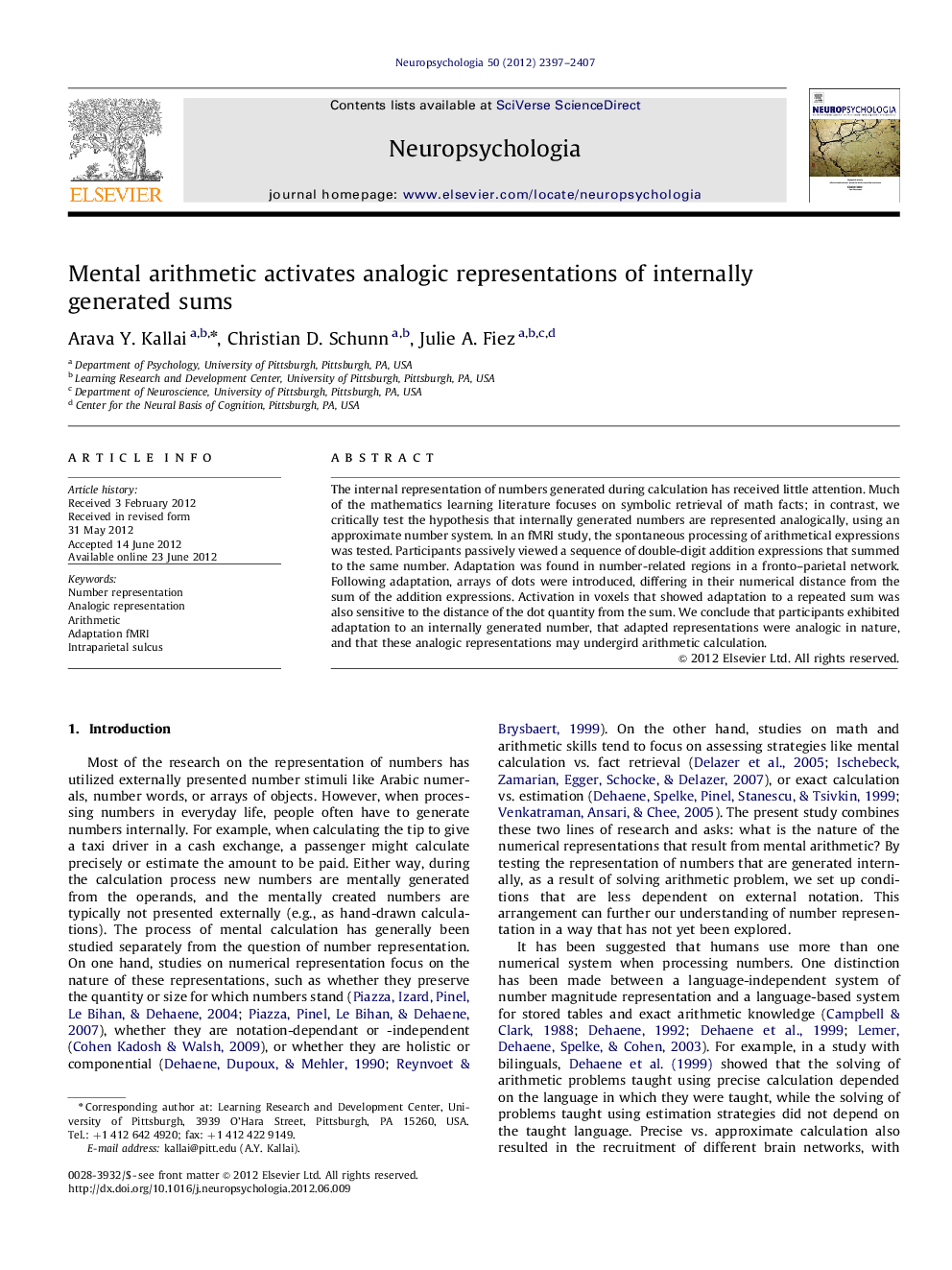| Article ID | Journal | Published Year | Pages | File Type |
|---|---|---|---|---|
| 944855 | Neuropsychologia | 2012 | 11 Pages |
The internal representation of numbers generated during calculation has received little attention. Much of the mathematics learning literature focuses on symbolic retrieval of math facts; in contrast, we critically test the hypothesis that internally generated numbers are represented analogically, using an approximate number system. In an fMRI study, the spontaneous processing of arithmetical expressions was tested. Participants passively viewed a sequence of double-digit addition expressions that summed to the same number. Adaptation was found in number-related regions in a fronto–parietal network. Following adaptation, arrays of dots were introduced, differing in their numerical distance from the sum of the addition expressions. Activation in voxels that showed adaptation to a repeated sum was also sensitive to the distance of the dot quantity from the sum. We conclude that participants exhibited adaptation to an internally generated number, that adapted representations were analogic in nature, and that these analogic representations may undergird arithmetic calculation.
► Presentation of addition expressions engaged a fronto-parietal number system. ► Presentation of distinct expressions with the same sum produced neural adaptation. ► The adaptation was sensitive to numerical distance effects across notations. ► The adapted representations were abstract and analogic in nature.
